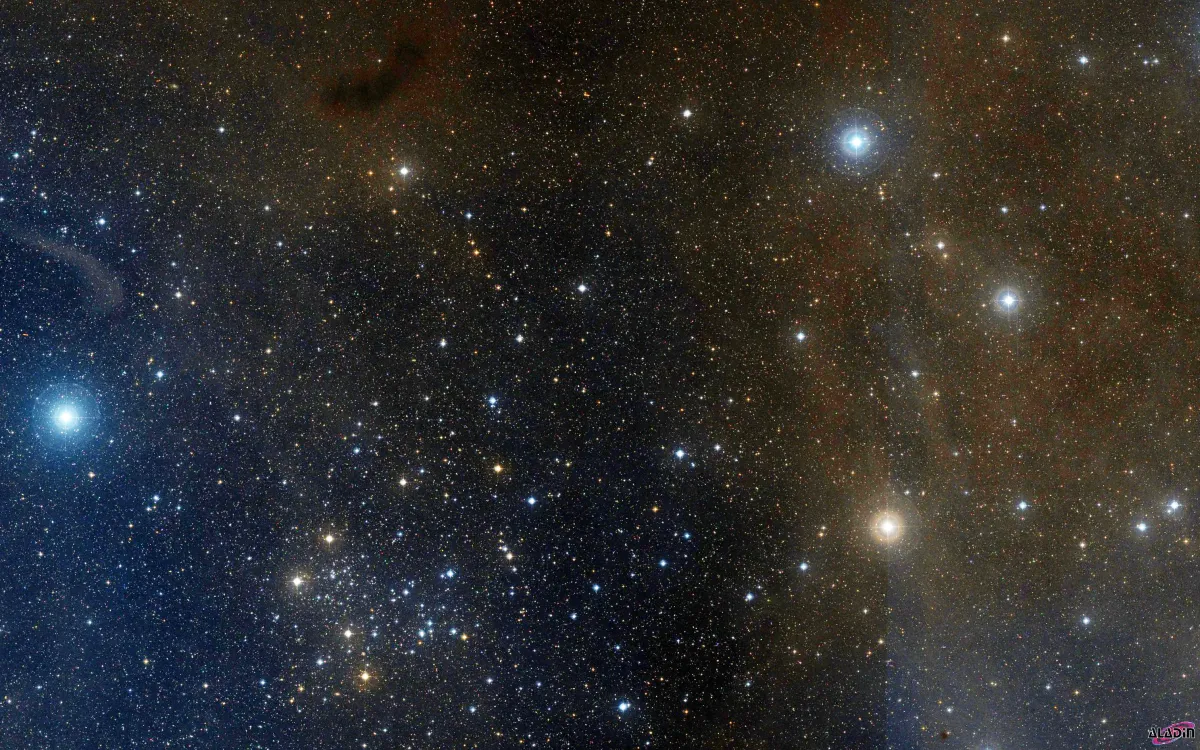Open Clusters NGC 1750 & NGC 1758

History
On 26 December 1785 William Herschel discovered the open clusters NGC 1758 (VII 21) and NGC 1750 (VIII 43) using his 18.7-inch speculum reflector at Slough, UK. For cluster VII 21 he noted: «A cluster of pretty compressed stars with many extremely small stars mixed with them.» and for cluster VIII 43 he noted: «A cluster of very coarsely scattered large stars, joining to the following VII 21.» [464]
John Herschel lists cluster VII 21 as GC 977 and described it as «Cluster; pretty compressed; stars large and small.» The cluster VIII 43 is listed as GC 970 with the description: «Cluster; stars large, very considerably cattered». He also added the note for GC 970: «Auwers makes the P. D. of this cluster for 1830 = 66° 25', which is incorrect. The determining star is 109, n, Tauri, the cluster being 1° 29' north of the star. This would give 66° 39' for the P. D. for 1800, agreeing with C. H. and 66° 36' for 1830.» [467]
Heinrich d'Arrest searched for Herschels two clusters in the night of 9 November 1863 using the 11-inch f/17.5 Merz refractor at Copenhagen Observatory. For William Herschels cluster VIII 43 (NGC 1750) he wrote: «A cluster neither numerous nor elegant; scarcely of any importance. Our location is approaching the reduction of Auwers. According to the General Catalog, the declination would be 23° 26.8'. However, you should see the note in GC 970.» For William Herschels cluster VII 21 (NGC 1758) he wrote: «A bright and very elegant cluster of stars; they are of nearly all orders, scattered irregularly all around. An 8th magnitude star follows, 6' distant; another of the same magnitude is 5.5' distant towards the northeast.» [125]
Dreyer assumed that d'Arrests observation of cluster VIII 43 is a new cluster because he placed about 10 arcmin north of William Herschels. Dreyer gave it the number GC 5349 in his «General Catalogue» supplement of 1871, which then became NGC 1746 in the «New General Catalogue». [204, 313, 671]
Most likely John Herschel and d'Arrest included some of the brighter stars (e. g. HD 32380, 285115) north of William Herschels coarsely scattered cluster VIII 43 (NGC 1750) to belong to the same cluster and therefore corrected the position given by William Herschel in declination towards north, making NGC 1746 a duplicate entry for NGC 1750.
Physical Properties
NGC 1750 and NGC 1758 are two overlapping, independent open clusters with NGC 1758 being further away. Both lie behind a dust layer of the Taurus dark cloud, which causes a reddening of the light. NGC 1750 contains 79 members and NGC 1758 contains 57 members down to 15 mag. [672]
| Name | RA | Dec | Type | vMag | Dim | MD | Dreyer Description | Identification, Remarks |
|---|---|---|---|---|---|---|---|---|
| NGC 1746 | 05 03 50.0 | +23 46 12 | *Grp | 6.1 | 40 | Cl, P | GC 5349; OCL 452; no cluster | |
| NGC 1750 | 05 03 54.0 | +23 39 30 | OCL | 25 × 12 | 0.630 | Cl, st L, vc sc | WH VIII 43; GC 970; OCL 454 | |
| NGC 1758 | 05 04 36.0 | +23 47 54 | OCL (IV1p) | 40 | 0.760 | Cl, pC, st L and S | WH VII 21; GC 977; OCL 453 |
Finder Chart
The open clusters NGC 1750 and NGC 1758 are located in the constellation Taurus. On 10 December they are in opposition to the Sun and hence culminates at local midnight. The best viewing time from your location is in the months August to May.
